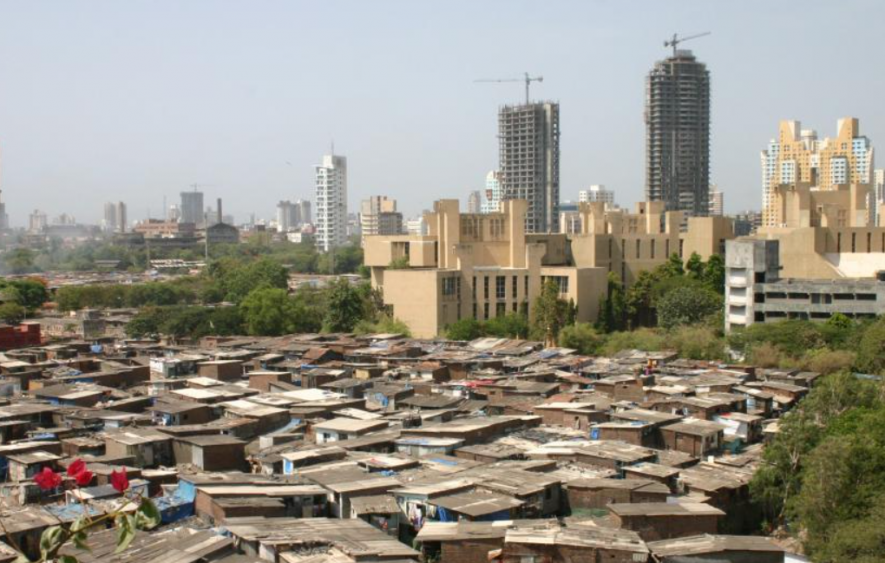‘Economic Inequality in India Now Sharper Than Under British Raj’ | NewsClick
'Economic Inequality in India Now Sharper Than Under British Raj' NewsClick


Sustainable Development Goals (SDGs) and Economic Inequality in India

Introduction
The World Inequality Database has recently published a paper highlighting the economic inequality in India, stating that it has become worse than during the British Raj. This article emphasizes the importance of addressing this issue in relation to the Sustainable Development Goals (SDGs).
Key Findings
- India’s top 1% holds 22.6% of the income and 40.1% of the wealth in 2022-23, which is among the highest in the world.
- Economic inequality in India has been on the rise since the early 2000s, with a significant increase in wealth concentration under the Narendra Modi government.
- The Indian income-tax system may be regressive when viewed from the lens of net wealth.
Recommendations
- Restructure the tax regime to account for both income and wealth to address growing income inequality.
- Increase public investments in health, education, and nutrition.
- Implement a “super tax” of 2% on the net wealth of the 167 wealthiest families in 2022-23 to raise resources for higher public spending.
Implications and Concerns
The concentration of incomes and wealth in India has significant consequences on global inequality dynamics due to its geographical size and population. The paper calls for improved access to official data and greater transparency to enhance the study of inequality and enable evidence-based public debates.
The extreme concentration of incomes and wealth is likely to facilitate disproportionate influence on society and government, especially in the context of weak democratic institutions. The integrity of key institutions in India appears to have been compromised in recent years, raising concerns about the country’s slide towards plutocracy.
SDGs, Targets, and Indicators
-
SDG 1: No Poverty
- Target 1.4: By 2030, ensure that all men and women, in particular the poor and the vulnerable, have equal rights to economic resources, as well as access to basic services, ownership, and control over land and other forms of property, inheritance, natural resources, appropriate new technology, and financial services, including microfinance.
- Indicator 1.4.1: Proportion of population living in households with access to basic services.
-
SDG 10: Reduced Inequalities
- Target 10.1: By 2030, progressively achieve and sustain income growth of the bottom 40 percent of the population at a rate higher than the national average.
- Indicator 10.1.1: Growth rates of household expenditure or income per capita among the bottom 40 percent of the population and the total population.
- Indicator 10.1.2: Proportion of population living below the national poverty line, by sex and age.
-
SDG 16: Peace, Justice, and Strong Institutions
- Target 16.6: Develop effective, accountable, and transparent institutions at all levels.
- Indicator 16.6.1: Primary government expenditures as a proportion of original approved budget, by sector (or by budget codes or similar).
Table: SDGs, Targets, and Indicators
| SDGs | Targets | Indicators |
|---|---|---|
| SDG 1: No Poverty | Target 1.4: By 2030, ensure that all men and women, in particular the poor and the vulnerable, have equal rights to economic resources, as well as access to basic services, ownership, and control over land and other forms of property, inheritance, natural resources, appropriate new technology, and financial services, including microfinance. | Indicator 1.4.1: Proportion of population living in households with access to basic services. |
| SDG 10: Reduced Inequalities | Target 10.1: By 2030, progressively achieve and sustain income growth of the bottom 40 percent of the population at a rate higher than the national average. | Indicator 10.1.1: Growth rates of household expenditure or income per capita among the bottom 40 percent of the population and the total population. |
| Indicator 10.1.2: Proportion of population living below the national poverty line, by sex and age. | ||
| SDG 16: Peace, Justice, and Strong Institutions | Target 16.6: Develop effective, accountable, and transparent institutions at all levels. | Indicator 16.6.1: Primary government expenditures as a proportion of original approved budget, by sector (or by budget codes or similar). |
Analysis
1. Which SDGs are addressed or connected to the issues highlighted in the article?
The issues highlighted in the article are connected to SDG 1: No Poverty, SDG 10: Reduced Inequalities, and SDG 16: Peace, Justice, and Strong Institutions.
2. What specific targets under those SDGs can be identified based on the article’s content?
Based on the article’s content, the specific targets that can be identified are:
– Target 1.4: Ensuring equal rights to economic resources and access to basic services for the poor and vulnerable.
– Target 10.1: Achieving and sustaining income growth of the bottom 40 percent of the population at a rate higher than the national average.
– Target 16.6: Developing effective, accountable, and transparent institutions at all levels.
3. Are there any indicators mentioned or implied in the article that can be used to measure progress towards the identified targets?
Yes, there are indicators mentioned or implied in the article that can be used to measure progress towards the identified targets:
– Indicator 1.4.1: Proportion of population living in households with access to basic services.
– Indicator 10.1.1: Growth rates of household expenditure or income per capita among the bottom 40 percent of the population and the total population.
– Indicator 10.1.2: Proportion of population living below the national poverty line, by sex and age.
– Indicator 16.6.1: Primary government expenditures as a proportion of original approved budget, by sector (or by budget codes or similar).
These indicators can provide insights into the level of poverty, income growth, and effectiveness of institutions in addressing economic inequality.
SDGs, Targets, and Indicators
| SDGs | Targets | Indicators |
|---|---|---|
| SDG 1: No Poverty | Target 1.4: By 2030, ensure that all men and women, in particular the poor and the vulnerable, have equal rights to economic resources, as well as access to basic services, ownership, and control over land and other forms of property, inheritance, natural resources, appropriate new technology, and financial services, including microfinance. | Indicator 1.4.1: Proportion of population living in households with access to basic services. |
| SDG 10: Reduced Inequalities | Target 10.1: By 2030, progressively achieve and sustain income growth of the bottom 40 percent of the population at a rate higher than the national average. | Indicator 10.1.1: Growth rates of household expenditure
Behold! This splendid article springs forth from the wellspring of knowledge, shaped by a wondrous proprietary AI technology that delved into a vast ocean of data, illuminating the path towards the Sustainable Development Goals. Remember that all rights are reserved by SDG Investors LLC, empowering us to champion progress together. Source: newsclick.in
Join us, as fellow seekers of change, on a transformative journey at https://sdgtalks.ai/welcome, where you can become a member and actively contribute to shaping a brighter future.
|








